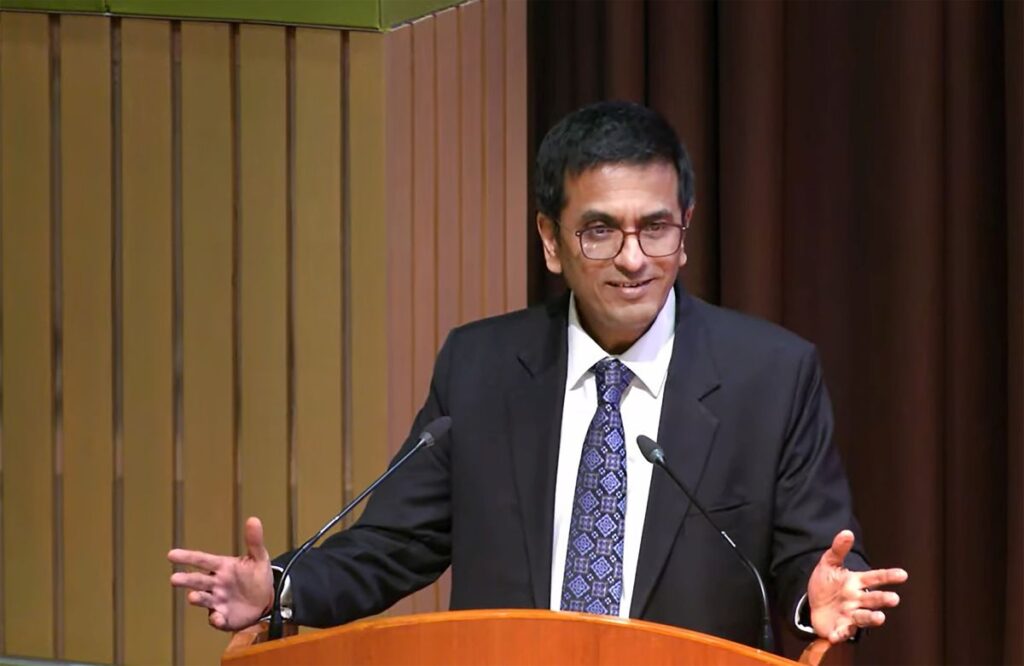Priyanshu
The issue of language barriers in the Indian judiciary has been a persistent challenge, particularly in higher courts where English serves as the primary medium of communication. Speaking at the National Conference on the Landscape of Technology in Courts in India, Chief Justice of India (CJI) DY Chandrachud brought this issue to the forefront, emphasizing the need for a more inclusive approach to ensure that all citizens can access justice, regardless of their linguistic background.
India is a linguistically diverse country with 22 officially recognized languages and hundreds of dialects. While this diversity is a source of cultural richness, it also presents significant challenges within the legal system. English, the predominant language in the Supreme Court and many High Courts, is not spoken or understood by a vast majority of the population. This creates a significant barrier for non-English-speaking litigants, who may find it difficult to comprehend court proceedings, judicial orders, or the legal processes they are involved in.
CJI Chandrachud pointed out that this language barrier can lead to a sense of alienation among citizens. When people are unable to understand the language in which legal proceedings are conducted, they may feel disconnected from the very institutions meant to protect their rights. This disconnect not only affects individual litigants but also undermines the broader principle of equal access to justice, which is a cornerstone of the Indian Constitution.
To tackle this challenge, the Supreme Court of India has been proactive in leveraging technology to bridge the language gap. One of the most significant initiatives in this regard is the development of the Supreme Court Vidhik Anuvaad Software (SUVAS), an AI-powered tool designed to translate judgments and legal documents into various regional languages. This technology is a vital step towards making the judiciary more accessible to all citizens, irrespective of their proficiency in English.
The introduction of SUVAS is particularly important in enhancing transparency and promoting a more inclusive legal system. By providing translations of judgments in regional languages, the judiciary ensures that more people can understand and engage with the legal system. This not only aids litigants but also contributes to the overall development of jurisprudence by allowing a broader section of society to access and interpret judicial decisions.
The Supreme Court’s efforts to address language barriers are part of a larger initiative to integrate technology into the judicial process. CJI Chandrachud emphasized that while AI can significantly enhance the efficiency and accessibility of the judiciary, it cannot replace the critical and ethical judgment that human lawyers bring to the table. AI tools like SUVAS are designed to complement the work of legal professionals by handling routine tasks such as translation, contract review, and case law research.
In addition to AI-powered translations, the judiciary has also introduced other technological advancements aimed at improving access to justice. These include live transcription services in courtrooms, E-seva Kendras to assist citizens in navigating the legal system, and the digitization of court records. These measures are designed to make the legal process more transparent, efficient, and user-friendly, ultimately bringing the courts closer to the people they serve.
CJI DY Chandrachud’s focus on overcoming language barriers within the judiciary highlights a critical aspect of ensuring access to justice in a diverse and multilingual society like India. The integration of AI and other technological advancements offers promising solutions, but the road ahead requires sustained effort and innovation.
By addressing the language barrier, the judiciary is not only making legal processes more inclusive but also reinforcing the fundamental principles of democracy. In a legal system where every citizen, regardless of the language they speak, can access and understand the judicial process, the promise of justice becomes more tangible and attainable. This initiative marks a significant step toward a more just and equitable society, where the judiciary truly serves all people, bridging the gaps that language once created.

